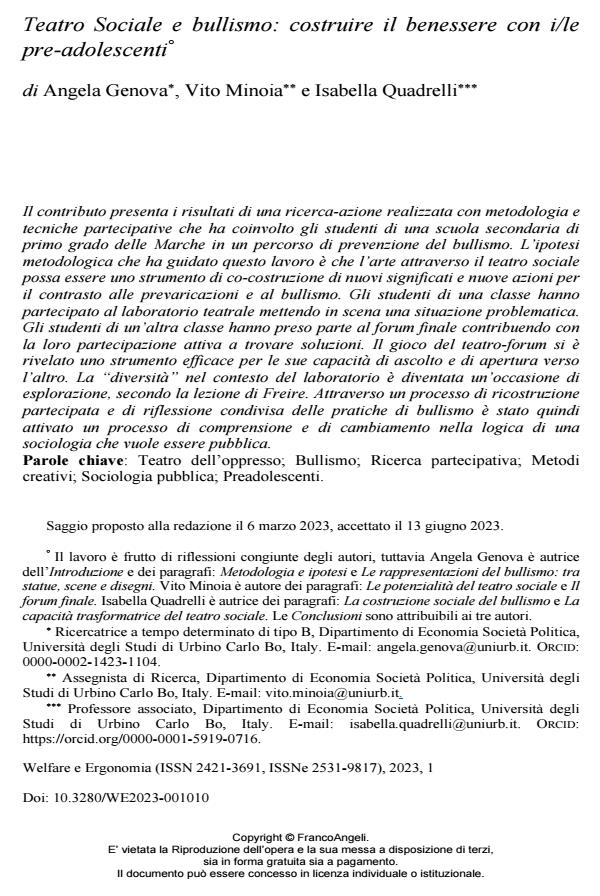Social Theater and bullying. Building wellness with pre-adolescents
Journal title WELFARE E ERGONOMIA
Author/s Angela Genova, Vito Minoia, Isabella Quadrelli
Publishing Year 2023 Issue 2023/1
Language Italian Pages 16 P. 121-136 File size 642 KB
DOI 10.3280/WE2023-001010
DOI is like a bar code for intellectual property: to have more infomation
click here
Below, you can see the article first page
If you want to buy this article in PDF format, you can do it, following the instructions to buy download credits

FrancoAngeli is member of Publishers International Linking Association, Inc (PILA), a not-for-profit association which run the CrossRef service enabling links to and from online scholarly content.
The article presents the results of an action-research project carried out with participatory methodology and creative techniques which involved middle school students from the Marche region in a bullying prevention programme. The methodological hypothesis that guided this work is that art, through social theater, can be a tool for the co-construction of new meanings and new actions to contrast abuse among peers. The students of one class took part in the theater workshop by staging a problematic situation. The students of another class participated in the final forum contributing with their active participation to find solutions. The forum-theater game proved to be an effective tool for its ability to allow students to listen and to be open to others. The “diversity” in the context of the laboratory has become an opportunity for exploration, according to Freire’s lesson. Through a process of participatory reconstruction and shared reflection of bullying practices, a process of understanding and change has therefore been activated in the logic of a sociology that wants to be public.
Keywords: Theater of the oppressed; Bullying; Participatory research; Creative methods; Public sociology; Pre-adolescents.
Angela Genova, Vito Minoia, Isabella Quadrelli, Teatro Sociale e bullismo: costruire il benessere con i/le pre-adolescenti in "WELFARE E ERGONOMIA" 1/2023, pp 121-136, DOI: 10.3280/WE2023-001010